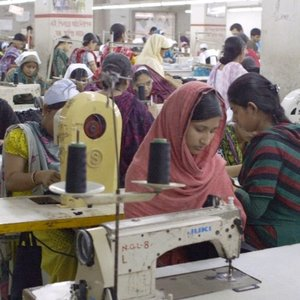— Stephen Leahy, The Guardian
Cheap synthetic fibers also emit gases like N2O, which is 300 times more damaging than CO2.
— James Conca -
1) Garment quality is declining every year. As a result, our clothes immediately look faded, shapeless, or worn out.
This is Fast Fashion: Mass-production of cheap, disposable clothing. Countless new collections per year make us feel constantly out of date and encourage us to keep buying.
We know that if working conditions improve in one country, companies will just move to another.
First of all, it means that many other brands do not even pay the minimum legal salary!
Employees usually work with no ventilation, breathing in toxic substances, inhaling fiber dust
On top of that, clothing workers regularly face verbal and physical abuse. In some cases, when they fail to meet their (unreachable) daily target, they are insulted, denied breaks, or not allowed to drink water.
Because the fashion industry requires low-skilled labor, child labor is particularly common in this industry.
In South India, for example, 250,000 girls work under the Sumangali scheme, a practice which involves sending young girls from poor families to work in a textile factory for three or five years in exchange for a basic wage.
Hey! Check out my new Michael Kors handbag.
A recent study found hazardous chemicals in 63% of the items tested from 20 different textile brands (including fashion giants).










